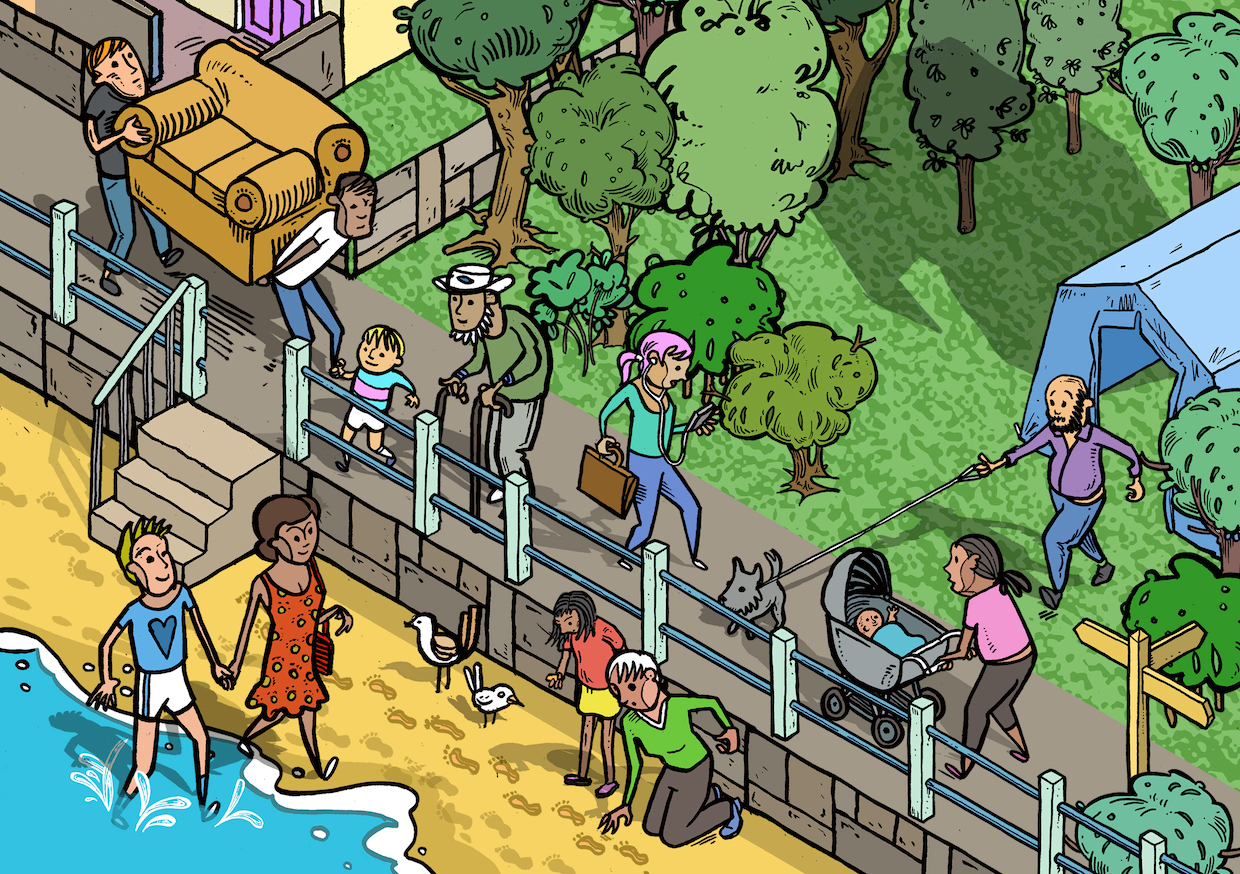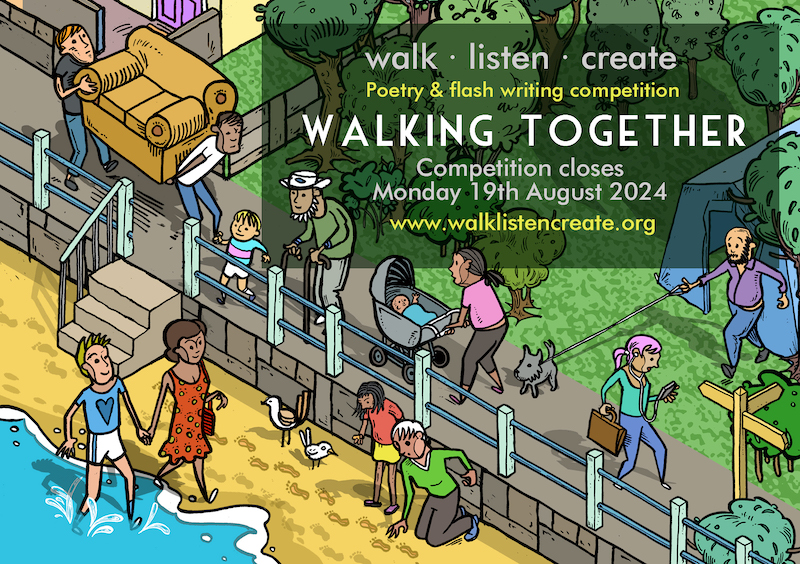Long listed for the Write about Walking Together competition 2024
Thyme – written and read by Damaris West
Where the stream is a path
up the sandstone boulders
and the path is a stream,
there are shell-pink buds
of dog rose, sowbread, cranesbill,
one lone orchid, mysterious
blue flowers I can’t name,
- and wild thyme.
'Look!' I call to the dogs
as they rear and plunge
through drenching grasses,
'I've found us thyme!'
But they do not heed me, knowing
full well they have time in abundance,
full well they'll be granted to live again
twitching tonight in their dreams
this beautiful afternoon.
- Read other pieces in the Write about Walking Together competition long list
- Itching to write something yourself? Submit a piece to our Shorelines project, and invite your friends to read it aloud. Join one of our creative writing workshops or keep up to date with all our competitions by signing up to our ‘Walking Writers’ newsletter here or to our curated newsletter that covers all things about walking art here.




I loved your poem. Well done.